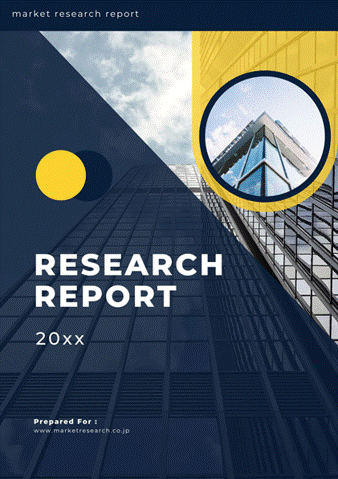 | • レポートコード:MRC2108A288 • 出版社/出版日:Mordor Intelligence / 2021年7月 • レポート形態:英文、PDF、130ページ • 納品方法:Eメール(受注後2-3営業日) • 産業分類:消費財 |
| Single User | ¥555,000 (USD3,750) | ▷ お問い合わせ |
| Team User | ¥629,000 (USD4,250) | ▷ お問い合わせ |
| Corporate License | ¥1,036,000 (USD7,000) | ▷ お問い合わせ |
• お支払方法:銀行振込(納品後、ご請求書送付)
レポート概要
| Mordor Intelligence社の本調査レポートは、テキスタイルのヨーロッパ市場について調査・分析し、イントロダクション、調査手法、エグゼクティブサマリー、市場洞察&動向、用途別分析、素材別分析、プロセス別分析、競争状況、市場機会/将来の見通しなどを掲載しています。 |
The textile industry is primarily concerned with the design, production, and distribution of yarn, cloth, and clothing. The raw material used may be natural or synthetic.
In Europe, the textile industry is a major contributor to the economy, employing nearly 6% of the working class in total manufacturing in the region. The COVID-19 outbreak has had a significant impact on business sectors and the overall economy of the European region. Europe is home to hundreds of leading retailers and brands, internationally acclaimed designers, thousands of talented emerging designers, and forward-thinking entrepreneurs, researchers, and educators. European high-quality textiles and premium fashion products are in growing demand, both in high-income countries such as the United, Switzerland, Japan, or Canada, but also emerging countries such as China and Hong Kong, Russia, Turkey, and the Middle East. Technical textiles are an undisputed success story of the European industry. In terms of international trade, both exports and imports of technical textiles have grown continuously over the years.
Key Market Trends
Rise in the Demand for Organic Textiles and Fabrics
Organic clothing is available in cotton, jute, silk, kapok, hemp, or wool. The demand for organic clothing is rising, as more and more consumers become concerned about the environment. The European Textile sector is especially proactive in undertaking research work for the development of new and innovative products. Given the health and environmental benefits of organic products, more eco-conscious consumers are now shifting towards clothing made from organic textiles. In response to consumer demand and pressure to green its operations, the fashion industry is now taking new strides towards using more sustainable fabrics. Fast fashion giants are also taking the leap towards organic and recycled alternatives. H&M, for instance, has already increased its use of organic and recycled cotton to 95%.
Rising Disposable Income and Changing Consumers’ Shopping Behavior
The growth in disposable income and the increasing preference for online shopping are expected to drive the European textile market for the next few years. Online shopping is still growing in importance, although take-up varies significantly by region and country. About 5 % of household expenditure in Europe is spent on clothing and footwear, of which about 80 % is spent on clothes and 20 % on footwear. Furthermore, increasing disposable has led to a rise in the number of supermarkets and retail stores, thereby driving the overall market growth. The demand is very high for premium and branded products due to increasing per capita disposable income. Rising disposable income, along with investments in textile manufacturing would create lucrative growth prospects for the Textile market across the region.
Competitive Landscape
The report covers major international players operating in the European textile industry. In terms of market share, few of the major players currently dominate the market. However, with technological advancement and product innovation, mid-size to smaller companies are increasing their market presence by securing new contracts and tapping new markets.
Reasons to Purchase this report:
- The market estimate (ME) sheet in Excel format
- 3 months of analyst support
1 INTRODUCTION
1.1 Study Assumptions and Market Definition
1.2 Scope of the Study
2 RESEARCH METHODOLOGY
3 EXECUTIVE SUMMARY
4 MARKET INSIGHTS AND DYNAMICS
4.1 Market Overview
4.2 Market Drivers
4.3 Market Restraints
4.4 Value Chain / Supply Chain Analysis
4.5 Porters Five Force Analysis
4.5.1 Threat of New Entrants
4.5.2 Bargaining Power of Buyers/Consumers
4.5.3 Bargaining Power of Suppliers
4.5.4 Threat of Substitute Products
4.5.5 Intensity of Competitive Rivalry
4.6 Impact of COVID-19 on the Market
5 MARKET SEGMENTATION
5.1 Application
5.1.1 Clothing
5.1.2 Industrial/Technical Applications
5.1.3 Household Applications
5.2 Material Type
5.2.1 Cotton
5.2.2 Jute
5.2.3 Silk
5.2.4 Synthetics
5.2.5 Wool
5.3 Process
5.3.1 Woven
5.3.2 Non-woven
6 COMPETITIVE LANDSCAPE
6.1 Market Concentration Overview
6.2 Company Profiles
6.2.1 Salvatore Ferragamo SpA
6.2.2 Koninklijke Ten Cate NV
6.2.3 Inditex
6.2.4 Tirotex
6.2.5 Chargeurs SA
6.2.6 Zorlu Holding
6.2.7 Miroglio Spa
6.2.8 Aquafilslo S.p.a.
6.2.9 Getzner Textil Aktiengesellschaft
6.2.10 Fulgar SpA
7 MARKET OPPORTUNITIES AND FUTURE TRENDS
8 DISCLAIMER